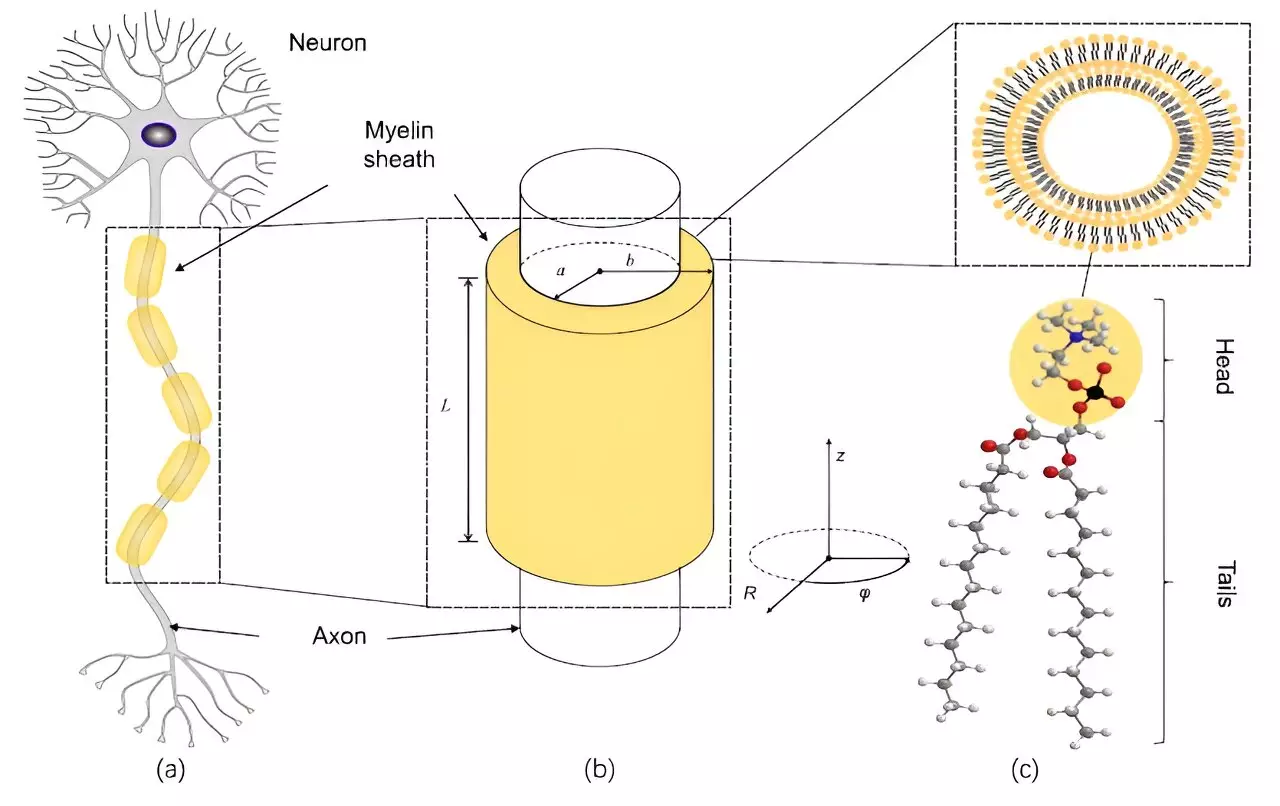The quest to understand consciousness remains one of the most intricate challenges faced by modern science. While numerous theories and models have attempted to illuminate the shadowy corners of the mind, one particularly audacious hypothesis posits a connection between consciousness and quantum mechanics. A recent study conducted by a research group in China has reignited interest in this hypothesis by positing that quantum entanglement may play a significant role in how neurons communicate. This article delves into these findings, providing insights into their implications for our understanding of consciousness and neural synchronization.
Central to the research is the myelin sheath, a protective covering that surrounds the long axons of neurons. This structure is not merely a passive insulator; it is a dynamic component that significantly influences neural communication. Myelin consists of lipids arranged in layered structures that are essential for maintaining the integrity of neuronal signals. Traditionally, it has been understood that electrical signals traveling along axons do so at speeds below that of sound, raising questions about how vast networks of neurons can synchronize rapidly enough to support consciousness and complex cognitive functions.
The recent study suggests that, within the myelin sheath, entangled photons may provide a previously unrecognized medium for instantaneous information transfer—essentially bypassing some of the limits imposed by traditional signal propagation along axons. By shifting the focus to quantum effects, researchers propose a new avenue for exploring how consciousness may emerge from neurological interactions.
Quantum mechanics, with its counterintuitive principles, offers a fertile ground for rethinking our understanding of the brain. The Chinese research team conducted their investigation by applying cavity quantum electrohydrodynamics to model the interactions taking place within the myelin sheath. They treated not only the photons but also the electromagnetic fields involved as quantum objects, allowing them to apply advanced quantum techniques to derive a wave function for photon interactions.
This approach led to a key finding: the production of entangled photons is facilitated in this myelin cavity, with an increased rate compared to untangled photons. This revelation is significant because it suggests that the entanglement of photons could contribute to faster and potentially non-local communication between neurons, fundamentally altering our understanding of how synchronized neural activity occurs.
At the heart of this research lies the concept of quantum entanglement—a phenomenon where the state of one particle is inherently linked to the state of another, regardless of the distance separating them. This property challenges classical intuitions about physics and allows for instantaneous effects across vast distances. In the context of neural communication, this means that changes in one part of the neuron system could be mirrored in another part, potentially enabling rapid responses and complex interactions that would otherwise be impossible given the constraints of traditional electrical signaling.
The implications of this are tantalizing. If photons within the myelin sheath can indeed communicate instantaneously via entanglement, it opens the door to understanding how the brain could achieve synchronized activities at remarkable speeds. This synchronized activity is believed to underpin not just simple reflexes but higher-level cognitive processes, suggesting a link between neural structure and conscious experience.
Professor Yong-Cong Chen, one of the researchers involved in the study, suggests that while a direct connection between consciousness and quantum entanglement is not confirmed, there is a compelling case to be made for exploring how these phenomena interact. As researchers continue to probe the depths of quantum mechanics and its influence on biological systems, we may begin to uncover mechanisms underlying consciousness itself. The study prompts a profound reevaluation of the relationship between physical processes in the brain and the subjective experiences that arise from them.
What stands out in this research is the critical framework it provides for further investigations. By proposing entangled photons as a mechanism for neural synchronization, the groundwork is laid for a multi-disciplinary exploration bridging physics, neuroscience, and philosophy. It suggests that to understand consciousness fully, we may need to embrace quantum theories alongside biological explanations—a harmonious blend of disciplines that could lead to breakthroughs in both science and philosophy.
As the lines between physics and neuroscience blur, the implications of leveraging quantum entanglement to understand neural communication could redefine both fields. While more research is undoubtedly needed to unravel the complexities of this relationship, the prospects appear promising. By investigating how quantum phenomena influence brain function and conscious experience, we may not only be unlocking the secrets of the mind but also providing a glimpse into the fundamental nature of reality itself. The challenge now lies in integrating these ideas into a coherent framework that honors the intricacies of consciousness while remaining rooted in rigorous scientific inquiry.

